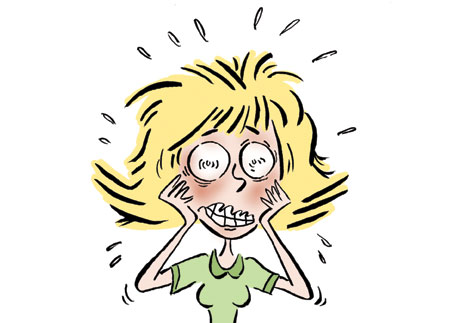
#1. Cultivate a positive attitude.
Happiness is an attitude and we can all make choices about our own happiness. William Shakespeare once wrote, “Nothing is either bad or good, but thinking makes it so.” That’s attitude. We really do choose whether we will have a good or bad attitude. The more we focus on the negatives the worse we feel, and the worse we feel the more we focus on the negatives. That’s a descending spiral that can kill. For me, every negative situation is also a learning experience. If I focus on learning, at least for me, I can shift a negative to a positive. Give it a try.
#2. Work on your own happiness.
ln an earlier piece on Happiness that ran for several weeks I listed 30 different ways to improve your own happiness. Take a look at that piece for those 30 ways you can improve your own happiness. Remember, as adults we are responsible for our own happiness. We can’t dump that responsibility on someone else. It’s on us.
#3. Use the “Standard Prescription.”
At the risk of being repetitious, focus on the last two points of the Standard Prescription (I have it in those 30 ways to improve your happiness.). Exercise and diet play a huge role in how we respond to and handle stress. Recreation, socialization and fun are also important.
#4. Sleep.
None of us function well when we burn the candle at both ends. When we’re really stressed it can be very difficult to sleep. And there can be a myriad of things that impact our sleep with stress just one. Health problems such as chronic pain and past traumas are just two examples. Get a checkup and take care of your health. Consider medication or a natural substance (melatonin or tryptophan) as a short-term sleep aide. That’s actually step one of the Standard Prescription. And you might consider the second step as well, therapy.
#5. Do some “body work.”
Have a stiff neck, stiff shoulders, or limited flexibility? Chances are you’ve got a buildup of muscle tension. Tension often starts in the core muscles deep inside the pelvis and tends to gradually spread throughout the body if the tension is not relieved. People with a significant history of trauma often carry a large portion of tension. Simple exercise, like walking or the gym, can’t touch this deep inner core stuff. Exercising, especially if we over-do it, may make the problem worse. No form of talk therapy can make those deep inner core muscles relax. However, other approaches can help – things like massage therapy, Tai Chi, Qi Gong, somatic experiencing, and sensorimotor psychotherapy. The catch with these is you need a coach or therapist, you have to work with someone else’s schedule, you have to travel, and you have to pay for each session. There is a solution to this problem. Tension, stress, and trauma release exercises or TRE consists of seven low-impact stretches and is a proven and effective way to relieve this deep inner core muscle tension. Once you learn the stretches, typically three guided sessions, you can do TRE as often as you want, where ever you want, and for the rest of your life.
More information about TRE is on the website (https://thehavenplace.org) under Specialties and also in the Resources page.

